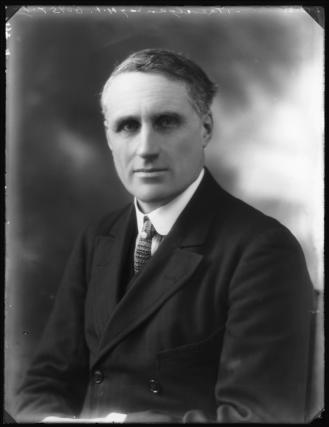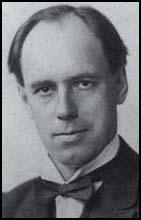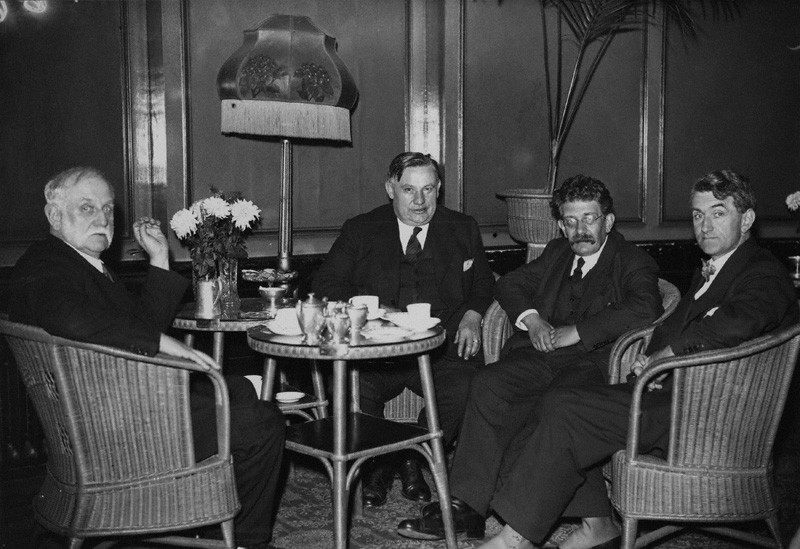by Pete Goddard and Atul Hatwal
In the run up to the 1932 Labour party conference in Leicester, memories of the previous year’s electoral wipe-out were still raw, not to mention the festering resentment at Ramsay Macdonald’s betrayal.
Everyone was in the mood for change.
But just how that change might end up looking remained to be seen. Was the party Clark Kent striding into a phone booth, or Leslie Ash popping into the lip clinic?
One prominent change had already occurred on the left. The ILP had recently decided to disaffiliate from Labour and remain, in the words of Aneurin Bevan, “pure, but impotent.”
This meant there was no rebellious left wing to cause friction and everything at conference was going to run nice and smoothly.
Ha! Just kidding.
In fact a selection of ILP members had opted to remain with the Labour party, allowing the ILP to drift off into irrelevance without them. Their opting for impure potency meant that they were still in the party, but that didn’t mean they’d suddenly changed their socialist beliefs.
Understandably, these ex-ILP socialists under Frank Wise decided that, with the ILP gone, they ought to get organised. And perhaps find some new friends in the process.
Flowers and chocolates were despatched to the somewhat sinister-sounding Society for Socialist Inquiry and Propaganda (SSIP). This socialist pressure group was known by founder GDH Cole as the Zip – presumably because nobody wanted to get their policies caught in it.
The SSIP’s aims were, on the face of it, identical to those of the ILP leftovers. So, after the briefest of courtships, on the eve of Labour’s 1932 conference, a new faction was born- the Socialist League.
The League began with hard negotiations over who should lead this new socialist supergroup. GDH Cole favoured the SSIP Chair Ernest Bevin, whilst the ILP rump lobbied hard for their man Frank Wise.
The decision was made simpler by Bevin walking out before anyone else had managed to walk in. The Zip might have merged into the League, but Bevin wasn’t having any truck with ILP types.
Despite Cole’s pleas, the artistic differences were too great, Bevin refused to sign-up and went solo.
Not one for sour grapes, Cole threw himself behind the league wholeheartedly, later writing of his period, doutbless with a nostalgic tear in his eye, “I tried to make the best of a bad business by giving full support to the Socialist League”
Promising stuff.
Fortunately, the new league also had the more enthusiastic support of Stafford Cripps. Cripps was a vital and valued member, having as he did the two attributes every new movement looks for – a firm belief in the cause and shedloads of money.
The Socialist League held its inaugural meeting on Sunday 2 October 1932 at the Co-operative Hall, Leicester, the day before the Labour party’s annual conference opened in the same town. Every journalist in town readied a cheesy headline.
At the meeting, the League agreed on its objective, which was “to make socialists, and to further by propaganda and investigation, the adoption by the working class movement of an advanced programme and a socialist outlook”
Nobody was sure how to ‘make socialists’ exactly, but it probably involved empty washing-up liquid bottles and sticky-backed plastic.
The League’s willingness to embrace a radical approach was signalled before conference even began. In a discussion on government foreign policy, the League’s Sir Charles Trevelyan, who was a socialist, baronet, land-owner and the lord lieutenant of Northumberland, said strike action should be used to influence the government.
Bevin’s retort left no doubt as to his opinion of the ideas of radical intellectuals and the League in general. “You want a strike? Ok, I am to call out 600,000 dockers; will you call out the Lord Lieutenants?”
Although to be fair, such a strike would have severely affected the livelihoods of stocking-makers, wig suppliers and ermine-wholesalers.
Undeterred, the League’s entered the conference determined to make its presence felt.
Scheduled to be unveiled at the conference were the first results of the policy committee that had been convened the previous December under George Latham.
This committee included leading lights Hugh Dalton and Herbert Morrison and was tasked with developing a completely new, concrete and practical policy for the party.
The first four reports from this committee were ready for presentation. The Socialist League was ready to start disagreeing.
On the economic front, Hugh Dalton proposed the establishment of a national investment board and the public ownership of the bank of England.
It was social-ish, but not socialist enough for the League.
Frank Wise immediately moved an amendment. He wanted to go further and nationalise all joint stock banks.
Bevin opposed the amendment as exactly the kind of thing he had worried the League might get up to. But with Cripps’ support, the amendment narrowly carried 1,141,000 to 984,000
If this hinted that there was an appetite in the hall for a more socialist approach, another resolution proved it.
Sir Charles Trevelyan moved, “that the leaders of the next Labour Government and the Parliamentary Labour Party be instructed by the National Conference that, on assuming office, either with or without power, definite socialist legislation must be immediately promulgated, and that the party should stand or fall in the House of Commons on the principles in which it has faith”
Stand or fall on principles? But this is politics.

Sir Charles Trevelyan strongly supported the Socialist League and was overjoyed when their single ‘Don’t you want me? (to own the means of production)’ went to number one.
It was a re-play of previous skirmishes for control of the party. The motion was opposed by Arthur Henderson – nominally still leader and recently returned to the Commons in a by-election – who really didn’t want to fall. He opposed on the usual grounds that tying the party’s hands to one course of action would leave them unable to respond to changes in circumstances.
This time though, Henderson was fighting a losing battle. The motion passed without even a call for a card vote.
The right of the party, meanwhile, saw how much fun everyone else was having with their faction action. So they joined in too.
The 1932 conference marked the emergence of a division within the right of the party that endures to this day. The conflict was over the privileged position of trade unions in Labour, and was exemplified by the row between Herbert Morrison and Ernest Bevin.
Morrison had brought his transport plan to the conference. This laid out his vision in which nationalised industries were run by non-political experts. Essentially he just wanted to play SimCity, but with computers still a few years off, he had to resort to real life.
Bevin couldn’t help but notice that Morrison’s board of experts did not include union representation.
This was quite deliberate. Morrison feared that by giving the trade unions an automatic seat at the table, he would be forced to offer the same concession to other interests – specifically, capital. He didn’t want his technocratic machine turning into a political battleground.
But Bevin could not accept a nationalised industry without guarantees of union influence. He fought the matter to a standstill, with Morrison withdrawing his paper for further discussion, muttering “I’ll be back.”
For one man in particular, all the faction fun was just too much. Conference closed with news that Arthur Henderson was resigning as leader of the party.
Uncle Arthur chose to spend the rest of his political career working on a simpler project than uniting the Labour party – disarming Europe.
For his peacemaking efforts, Henderson was eventually awarded a Nobel Peace prize in 1934 – a fitting reward for the man who’d devoted most of his life to keeping together Labour’s eternally warring groups.
As for Labour, it left Leicester with a whole new set of factions.
The Socialist League was growling at the leadership, while fending off sniping from the ILP MPs who had disaffiliated. Tensions simmered on the right between Bevin and Morrison.
And in parliament, Lansbury and Attlee had to work out how to deal with the Svengali of the Socialist League, Stafford Cripps, as he galloped wildly away leftwards.
The fun was only just starting.
Pete and Atul are not historians
Tags: Atul Hatwal, Charles Trevelyan, Frank Wise, Labour history uncut, Pete Goddard, Socialist League, Stafford Cripps












I’m pleased that people could still get a Nobel Prize for peace and disarmenament in those days, even though it did no good, with WWII on the horizon. In fact most of the Nobel Prizes given for Peace have gone to people who failed to deliver peace in our time or whenever. But the thought was there. And so to with the collective Prize to the WMD Team in Syria.